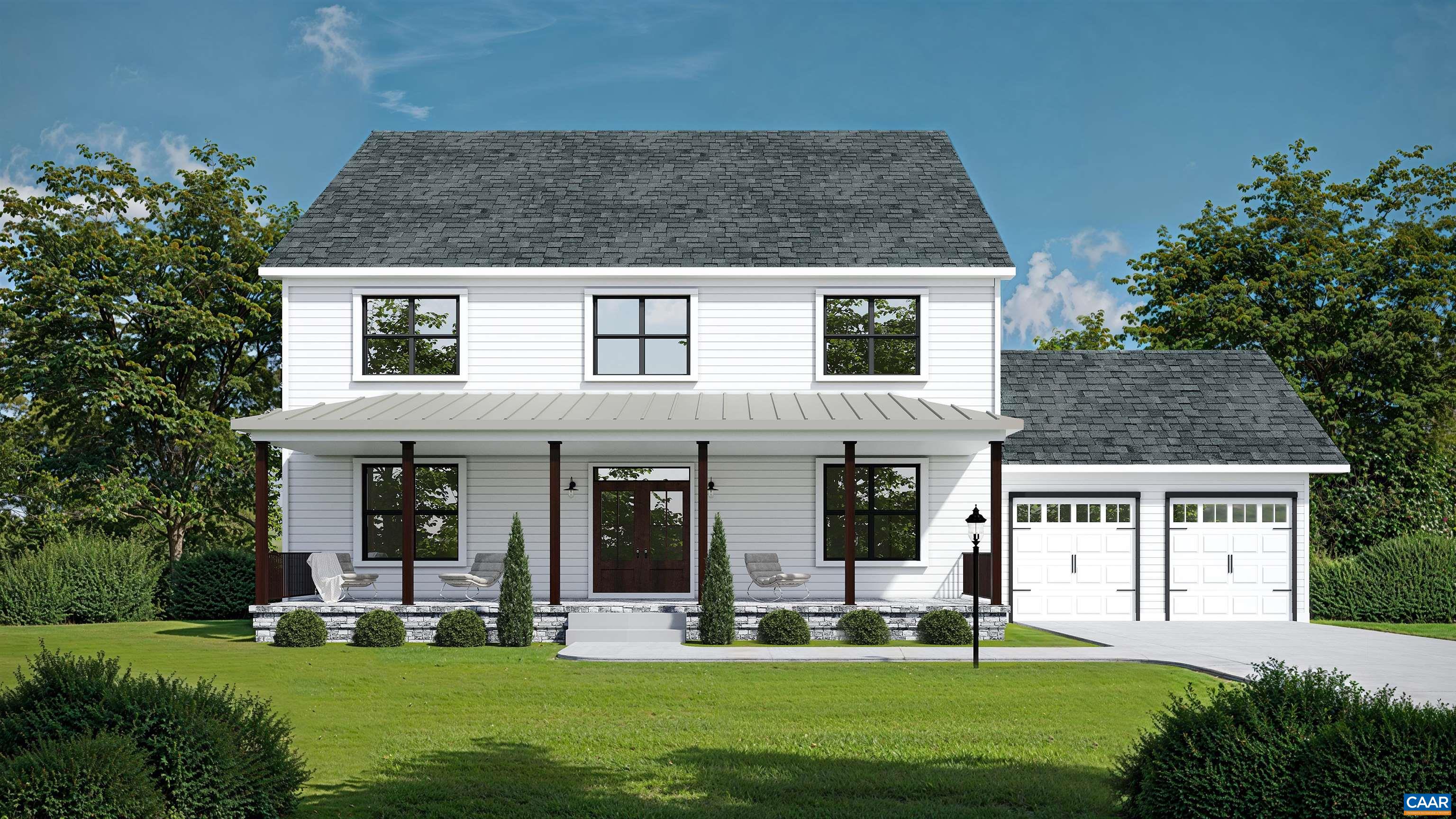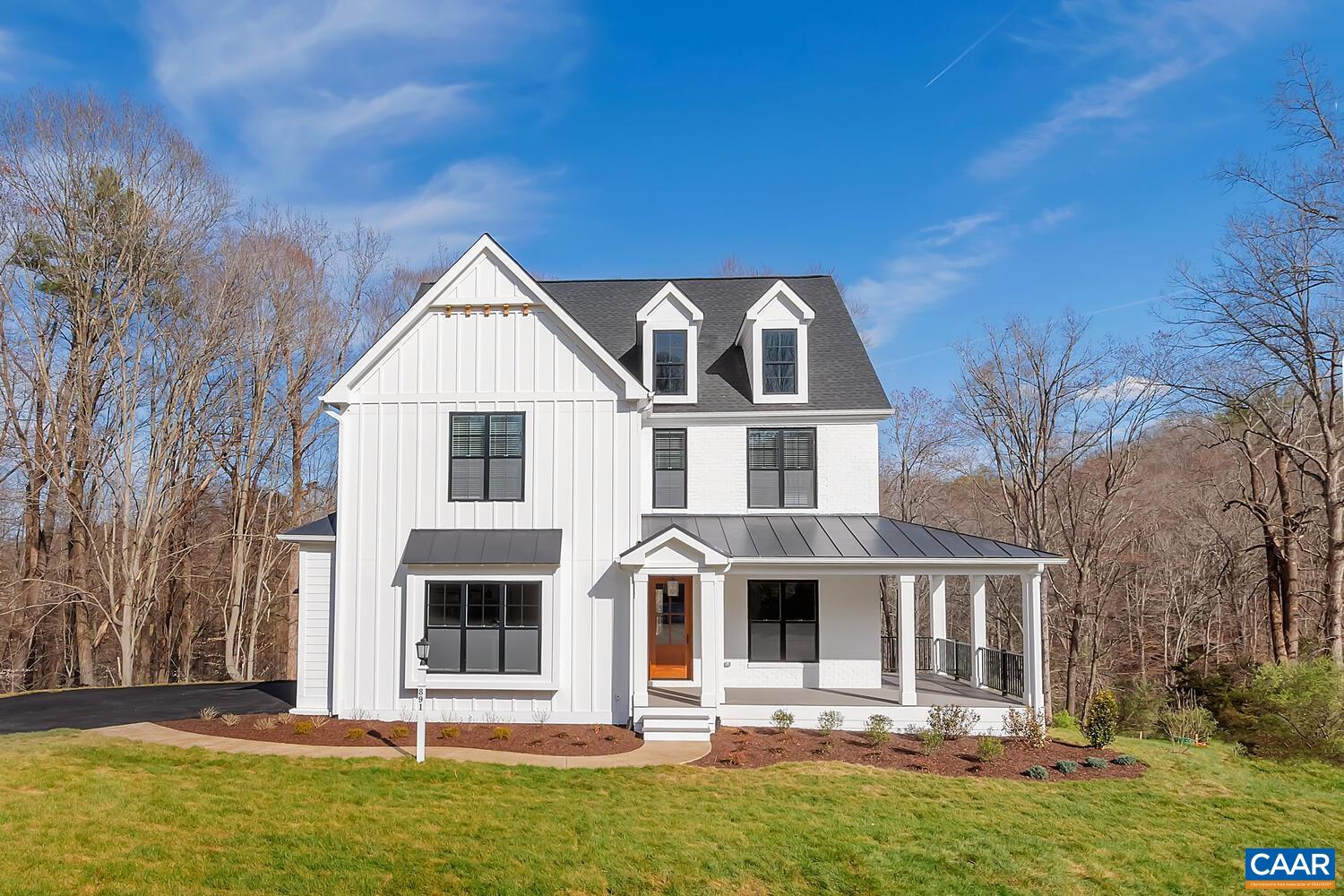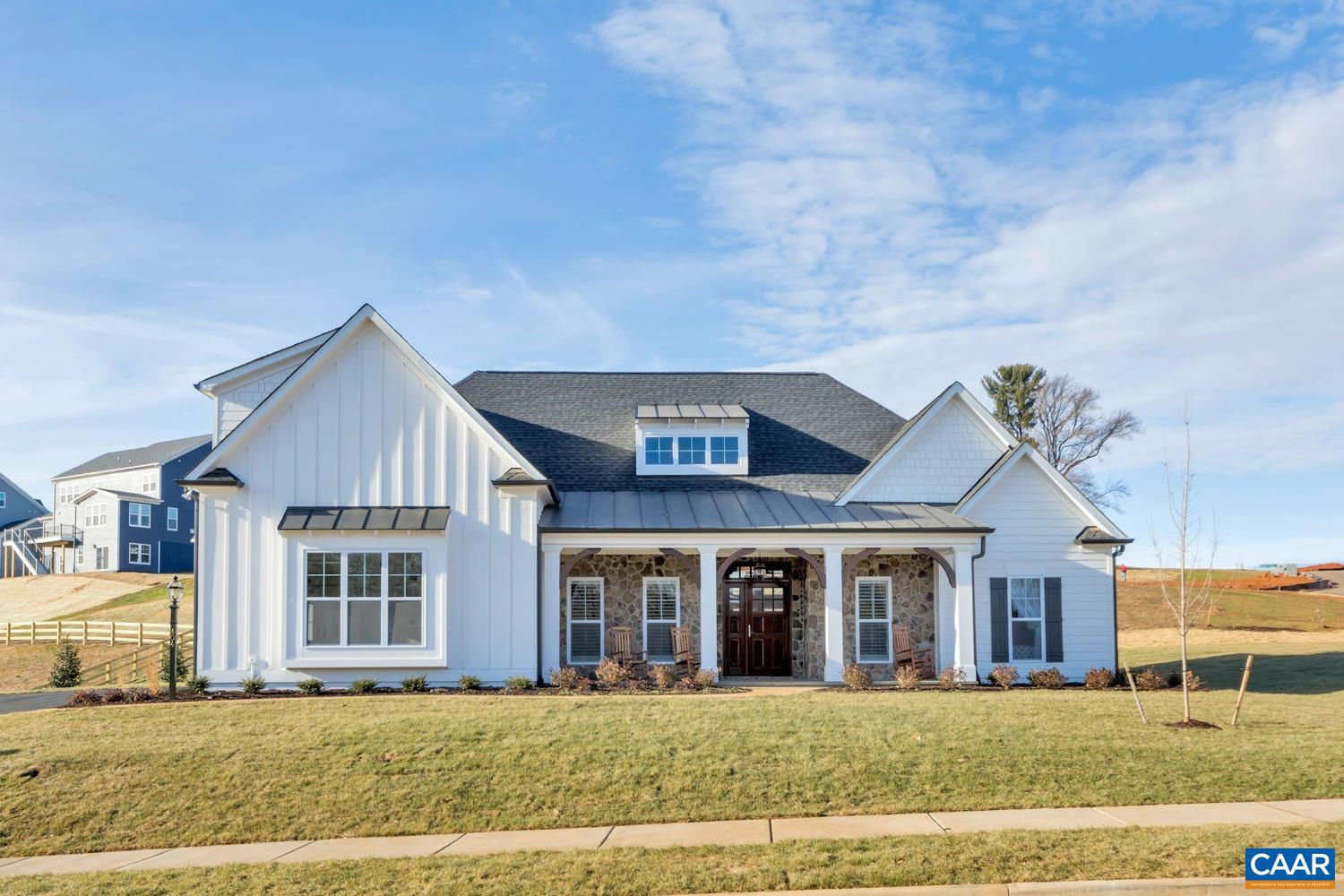Yancey Mills Charlottesville Homes
 $8,800,000
Active
$8,800,000
Active
5190 Sugar Ridge Rd Crozet, Virginia
5 Beds 5 Baths 6,062 SqFt 212.58 Acres
 $1,549,000
Active
$1,549,000
Active
3 Rothwell Ln Lot 3 Crozet, Virginia
4 Beds 4 Baths 6,004 SqFt 0.65 Acres
 $1,299,900
Active
$1,299,900
Active
6119 - 2 Jarmans Gap Rd Lot 2 Jarmans Gap Crozet, Virginia
4 Beds 5 Baths 3,948 SqFt 1 Acres
 $1,255,000
Active
$1,255,000
Active
3b Rothwell Ln Lot 3b Crozet, Virginia
4 Beds 3 Baths 3,197 SqFt 0.67 Acres
 $1,249,900
Active
$1,249,900
Active
6119 - 3 Jarmans Gap Rd Lot 3 Jarmans Gap Crozet, Virginia
4 Beds 4 Baths 3,525 SqFt 1 Acres
Yancey Mills History
The present village of Yancey Mills was formerly known as Hillsboro.
References to Yancey Mills or Yancey’s Mills which predate about 1875 usually refer to a community located about a mile west of Hillsboro along present U.S. 250.
This first Yancey Mills was named for Charles Yancey, who operated a mill, distillery, and tannery at this location.
Hillsboro gradually became known as Yancey Mills when the Yancey Mills post office was moved to Hillsboro in the last quarter of the nineteenth century.
Although the post office is no longer operating, the surrounding community has retained the name of Yancey Mills.
Early Settlement
Few communities in Albemarle County are as closely linked with road transportation as Hillsboro/Yancey Mills.
One of the earliest roads in the county ran eastward from Rockfish Gap in the Blue Ridge, through the Yancey Mills area, and on to the Mechum’s River Depot area.
It was first authorized by a road order dating to 1748, only four years after Albemarle County was formed.
At Mechum’s River the road joined the Three Notch’d Road, which ran west from Richmond to the Blue Ridge.
The village of Hillsboro (now Yancey Mills) stands on land along the upper length of Mechum’s River acquired by the Barksdale family, especially Jonathan Barksdale (d. 1831).
Some of the Barksdale lands may have been purchased by his father, William Barksdale between 1765 and his death in 1796.
The road from Rockfish Gap ran directly through the present community of Hillsboro/Yancey Mills and encouraged the movement of settlers and businesses to this area.
Called the Rockfish Road, the Rockfish Gap Road or the old Staunton Road, this road was incorporated into the Rivanna and Rockfish Gap Turnpike in the early nineteenth century.
The road leading northward from Hillsboro toward Crozet, today’s Route 684, is referred to as Buck Mountain Road in some nineteenth-century deeds.
It is not clear how early this extension of the early Buck Mountain Road came into use.
Taverns and ordinaries were an essential featgre of the transportation system in Albemarle County during this period.
Several taverns are known to have been built in the Hillsboro/Yancey Mills vicinity during the eighteenth and early nineteenth centuries.
Black’s Tavern, located one mile west of Hillsboro/Yancey Mills along present U.S. 250, is said to date from the 1760s.
A two-story frame house, long known during the nineteenth century as Yancey’s Tavern, stands on the south side of present Route 749 in Yancey Mills.
It may date from as early as 1800.
As happened in other parts of the county, the original Yancey Mill village grew up around a grist mill. Hugh Alexander built a mill on Stockton Creek “not far from the foot of the hill west of Hillsboro” sometime during the eighteenth century.
This mill was probably located along present U.S. 250 near the house now known as the Cedars between Greenwood and Hillsboro/Yancey Mills.
This mill later was called Keye’s Mill and still later, Humphrey’s Mill.
It was “at one time a noted centre in that section; roads were made to it from every quarter”.
This mill was probably the same, or at least on the same site, as the one still owned by the Yancey family.
Early National Period (1789-1830)
A post office was established at Keye’s Mill around 1804.
Salma Keys was appointed its first postmaster in July 1804. For a brief period this community was called Keys’ Mills in postal records.
One source says the name of the post office was changed to Yancey’s Mills in November 1813.
Hall reported Yancey’s Mills listed in postal directories beginning in 1805 through 1859 and beyond.
Yancey Mills is named for Charles Yancey, who operated a tavern, store, mill and distillery in the early years of the nineteenth century (this has no relation to the previously mentioned Yancey Tavern, which was operated by a different Yancey somewhat later in the nineteenth century).
Charles Yancey’s enterprise was also known as May’s Tavern and, after 1827, as Cocke’s Tavern.
Some sources say these enterprises were operated by a Robert Yancey.
The site of the mill and tavern was on the south side of U.S. Route 250, just east of the historic building now called “Long House” and across the road from the Cedars.
Presumably the Charles Yancey mill was the same one formerly called Keys or Keyes’s mill.
Both Hillsboro and Yancey Mills grew rapidly during this period.
Mount Pleasant Methodist Church was built in 1828 on a hill “three or four hundred yards west” of Hillsboro.
Thomas Bowen purchased the old Isaac Hardin property near Greenwood in 1837.
He taught school in a building next to this church when he first came to the county.
Construction began on the Rivanna and Rockfish Gap Turnpike in 1829.
This toll road connected Brook’s Tavern at the foot of Afton Mountain with several shipping points on the Rivanna.
It followed the routes of the former Rockfish and Three Notch’d roads through Charlottesville and on to Meriwether’s Bridge across the Rivanna at the Woolen Mills.
The turnpike stimulated further growth in both Yancey Mills.
Antebellum Period (1830-1860)
The antebellum period was characterized by increased economic activity in both Yancey Mills and Hillsboro, due in large part to road traffic along the turnpike.
In 1835, the community of Yancey Mills is described as being on the Rivanna and Rockfish Gap Turnpike “between Charlottesville and Staunton, 16 miles from the former, and 24 from the latter”.
It contains a tavern, one mercantile store and a blacksmith shop.
Liberty Meetinghouse, in the neighborhood is free for all denominations (Martin 1835: 126).
There was, however, no mention of the community of Hillsboro, and this description should be applied to the earlier location of Yancey’s Mills.
Several buildings still standing in Hillsboro (now Yancey Mills) date from the antebellum period, although most have been added onto over their history.
The original part of the building now known as the Green Teapot Hotel probably dates from the 1830s.
The log portion of the Apperson-Boswell House also dates from the 1830s, and is a rare example of log domestic architecture in this part of the county.
A small house standing on U.S. Route 250 just east of the present village of Yancey Mills, may also be log and appears to date from the antebellum period.
In October 1839, Hillsboro Baptist Church was founded at its present location, although the current church building dates from 1905.
It replaced the original church destroyed by fire.
Hillsboro Church was an important focus for the community throughout the nineteenth century.
Among the residents known to have lived in Hillsboro during the antebellum period is Peter McGehee, who was a merchant in Hillsboro for a time and Addison Gentry, who taught a school for girls near the village.
The railroad arrived in western Albemarle County in the 1850s, drastically changing the transportation patterns in this area.
Traffic along the Rivanna and Rockfish Turnpike declined sharply, as farmers turned to the cheaper and quicker service offered by the railroad.
In 1857, the turnpike was sold to Albemarle County, which administered it for the rest of the century.
Civil War (1860-1865)
Relatively little military action occurred in either the Hillsboro/Yancey Mills area or Albemarle County during the Civil War.
Hillsboro supplied men for its own company on the Confederate side.
Men from Hillsboro made up Company K, the “Blue Ridge Rifles,” one of ten companies which brought the 19th Virginia Regiment to full strength. (A company averaged eighty-three men).
Company K was mustered into service in late May of 1861.
Reconstruction & Growth (1865-1914)
A comparison of the two maps of Albemarle County published in 1866 and 1875 illustrates the shift of population and economic activity from Yancey Mills to Hillsboro, with the latter appropriating the former’s name by the 1870s or 1880s.
The 1866 Hotchkiss map of Albemarle County shows both Hillsboro and the postal village called “Yancey’s Mills” located one mile west, next to “Cox’s Tavern.”
The 1875 Peyton map indicates about thirteen buildings clustered along the road at Hillsboro.
The church shown at this location is Hillsboro Baptist Church. Neither the former community of Yancey Mills or the gristmill are shown on this later map.
Sometime between 1875 and 1885, the post office was moved from its location at the old Yancey Mills to Hillsboro.
To avoid confusion with the town of Hillsboro in Loudoun County, the post office retained the name of Yancey Mills.
Chataigne’s gazetteer of 1884-85 lists four general merchants, one florist, one corn mill and one wool dealer in Yancey Mills as well as twenty-six principal farmers in the surrounding countryside .
Because Yancey Mills was bypassed by the railroad in the nineteenth century, the town grew little in the period between the Civil War and the early 1900s.
By 1911, the village’s population was estimated at twenty-five.
One nearby resident described Yancey Mills in the early years of the twentieth century as “a quiet spot … with only a few houses, a church, a country store and an inn on one village street”.
Several older houses in Yancey Mills were remodeled during this period.
A few houses, such as the Monger House and the Brown House were built in the first decade of the twentieth century.
The local Masonic lodge built a hall across from the Hillsboro Baptist Church sometime around 1910 which was used for other local gatherings as well.
It is now owned by the Veterans of Foreign Wars.
Even though late nineteenth-century gazetteers referred to the village as Yancey Mills, the name of Hillsboro continued in use for some time, undoubtedly causing confusion.
In providing directions for motorists, the 1908 Automobile Blue Book refers to “Hillsbury,” meaning Hillsboro, with no mention of the name Yancey Mills.
WORLD WAR I TO WORLD WAR II (1914-1945)
The automobile brought numerous changes to Yancey Mills.
The present U. S. Route 250 was is the result of highway department efforts to bypass communities with new highways.
At Yancey Mills, this occurred between 1932 and 1948.
Automobile tourism also increased in this area in the 1920s, as visitors traveled to the area’s numerous historic monuments and scenic – beauty spots.
During the 1920s, a house in the village was converted to an inn or guesthouse called the Green Teapot.
It was operated by two sisters from Philadelphia and the inn gained a reputation for its fine food and international clientele, among them several artists, actors, and writers.
The Dutch Garden Restaurant and Motel was another local landmark.
The establishment was opened and operated by a Dutchman in the 1920s and continued in business until he returned to Holland during World War II.
The three frame tourist cabins to the rear of the restaurant were among the earliest associated with the automobile era in Albemarle County.
Most of the houses still standing in Yancey Mills date from this period.
Such houses as the Bollendorff House and the Otis Shifflet House display features typical of the 1920s and 1930s.
The Bollendorff may be a “catalogue” house, ordered from a manufacturer such as Sears & Roebuck or- Montgomery Ward and assembled on site.
Most of Yancey Mills’ importance as a commercial center declined after World War II.
Albemarle County’s economy changed from one based solely on agriculture and small towns, to a service and trading economy centered in Charlottesville.
The construction of Interstate 64 in the late 1960s removed much commercial and tourist traffic from U.S. 250, further contributing to Yancey Mills’ decline.
